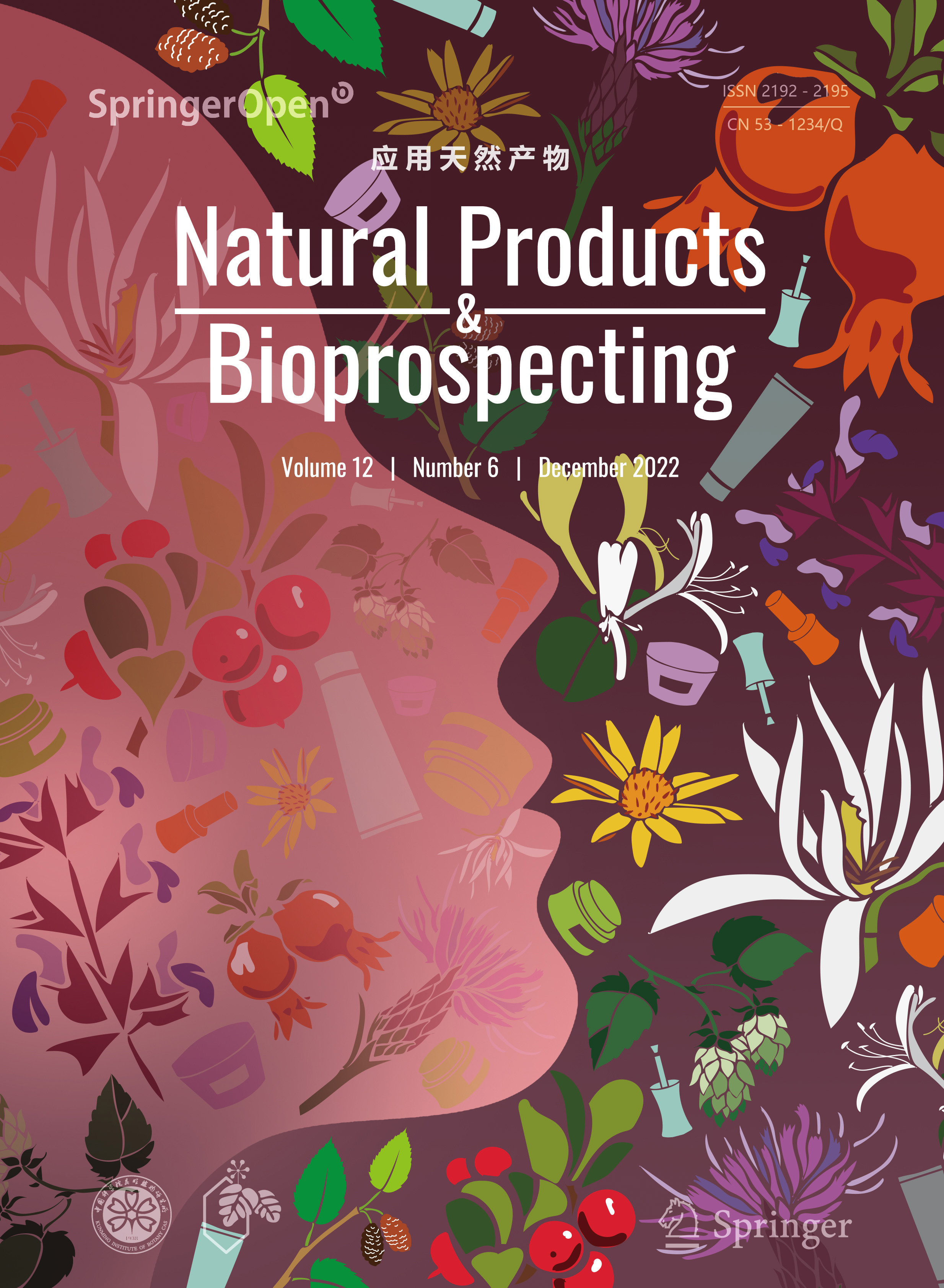|
|
Development and structure-activity relationships of tanshinones as selective 11β-hydroxysteroid dehydrogenase 1 inhibitors
Collect
Xu Deng, Su-Ling Huang, Jian Ren, Zheng-Hong Pan, Yu Shen, Hao-Feng Zhou, Zhi-Li Zuo, Ying Leng, Qin-Shi Zhao
Natural Products and Bioprospecting. 2022, 12 (6): 36-36.
DOI: 10.1007/s13659-022-00358-9
11β-Hydroxysteroid dehydrogenase 1 (11β-HSD1) represents a promising drug target for metabolic syndrome, including obesity and type 2 diabetes. Our initial screen of a collection of natural products from Danshen led to the identification of tanshinones as the potent and selective 11β-HSD1 inhibitors. To improve the druggability and explore the structure-activity relationships (SARs), more than 40 derivatives have been designed and synthesized using tanshinone IIA and cryptotanshinone as the starting materials. More than 10 derivatives exhibited potent in vitro 11β-HSD1 inhibitory activity and good selectivity over 11β-HSD2 across human and mouse species. Based on the biological results, SARs were further discussed, which was also partially rationalized by a molecular docking model of 1 bound to the 11β-HSD1. Remarkably, compounds 1, 17 and 30 signifcantly inhibited 11β-HSD1 in 3T3-L1 adipocyte and in livers of ob/ob mice, which merits further investigations as anti-diabetic agents. This study not only provides a series of novel selective 11β-HSD1 inhibitors with promising therapeutic potentials in metabolic syndromes, but also expands the boundaries of the chemical and biological spaces of tanshinones.
References |
Related Articles |
Metrics
|
|
|
The ion balance of Shotokuseki extract promotes filaggrin fragmentation and increases amino acid production and pyrrolidone carboxylic acid content in three-dimensional cultured human epidermis
Collect
Kei Tsukui, Takuya Kakiuchi, Masamitsu Suzuki, Hidetomo Sakurai, Yoshihiro Tokudome
Natural Products and Bioprospecting. 2022, 12 (6): 37-37.
DOI: 10.1007/s13659-022-00353-0
Natural moisturizing factor (NMF) in the stratum corneum contributes to the retention of moisture there. The purpose of this study was to determine the penetration of ions in Shotokuseki extract (SE) into the three-dimensional cultured epidermis and the effect of NMF on the biosynthesis of amino acids and pyrrolidone carboxylic acid formation. Various ions, amino acids and pyrrolidone carboxylic acid were quantified by inductively coupled plasma mass spectrometry, fully automatic amino acid analyzer or high-performance liquid chromatography (HPLC) in three-dimensional cultured epidermis after application of SE. Gene expression levels of profilaggrin, calpain1, caspase14, and bleomycin hydrolase, which are involved in NMF production, were determined by reverse-transcription qPCR and bleomycin hydrolase activity was determined by aminopeptidase assay. The application of SE increased Na, K, Mg, Ca, Al, and Fe levels in three-dimensional cultured epidermis. The mRNA levels of the starting material of amino acid synthesis proflaggrin, and calpain1 and bleomycin hydrolase, which are involved in its fragmentation, increased. The activity of bleomycin hydrolase also increased. Furthermore, the levels of amino acids and pyrrolidone carboxylic acid increased in the three-dimensional cultured epidermis. This suggests that the ionic composition of SE may be involved in its moisturizing efect on the stratum corneum.
References |
Related Articles |
Metrics
|
|
|
Phytochemical and pharmacological studies on Solanum lyratum: a review
Collect
Yue Zhao, Wen-Ke Gao, Xiang-Dong Wang, Li-Hua Zhang, Hai-Yang Yu, Hong-Hua Wu
Natural Products and Bioprospecting. 2022, 12 (6): 39-39.
DOI: 10.1007/s13659-022-00361-0
Solanum lyratum is one of the temperate plants, broadly distributed in Korea, China, Japan, India, and South-East Asia and well-documented in those oriental ethnic medicine systems for curing cancers, jaundice, edema, gonorrhea, cholecystitis, phlogosis, rheumatoid arthritis, etc. This review systematically summarized the research progress on S. lyratum respecting the botany, traditional uses, phytochemistry, pharmacology, and toxicology to increase people’s in-depth understanding of this plant, by data retrieval in a series of online or off-line electronic databases as far as we can reach. Steroidal saponins and alkaloids, terpenoids, nitrogenous compounds, and flavonoid compounds are the main chemical constituents in S.lyratum. Among them, steroidal alkaloids and saponins are the major active ingredients ever found in S. lyratum, exerting activities of anti-cancer, anti-inflammation, anti-microbial, anti-allergy, and antioxidation in vivo or in vitro. As a result, S. lyratum has been frequently prescribed for the abovementioned therapeutic purposes, and there are substantial traditional and modern shreds of evidence of its use.
References |
Related Articles |
Metrics
|
|
|
Natural products in cosmetics
Collect
Ji-Kai Liu
Natural Products and Bioprospecting. 2022, 12 (6): 40-40.
DOI: 10.1007/s13659-022-00363-y
The global cosmetics market reached US$500 billion in 2017 and is expected to exceed US$800 billion by 2023, at around a 7% annual growth rate. The cosmetics industry is emerging as one of the fastest-growing industries of the past decade. Data shows that the Chinese cosmetics market was US$60 billion in 2021. It is expected to be the world’s number one consumer cosmetics market by 2050, with a size of approximately US$450 billion. The influence of social media and the internet has raised awareness of the risks associated with the usage of many chemicals in cosmetics and the health benefits of natural products derived from plants and other natural resources. As a result, the cosmetic industry is now paying more attention to natural products. The present review focus on the possible applications of natural products from various biological sources in skin care cosmetics, including topical care products, fragrances, moisturizers, UV protective, and anti-wrinkle products. In addition, the mechanisms of targets for evaluation of active ingredients in cosmetics and the possible benefits of these bioactive compounds in rejuvenation and health, and their potential role in cosmetics are also discussed.
References |
Related Articles |
Metrics
|
|

